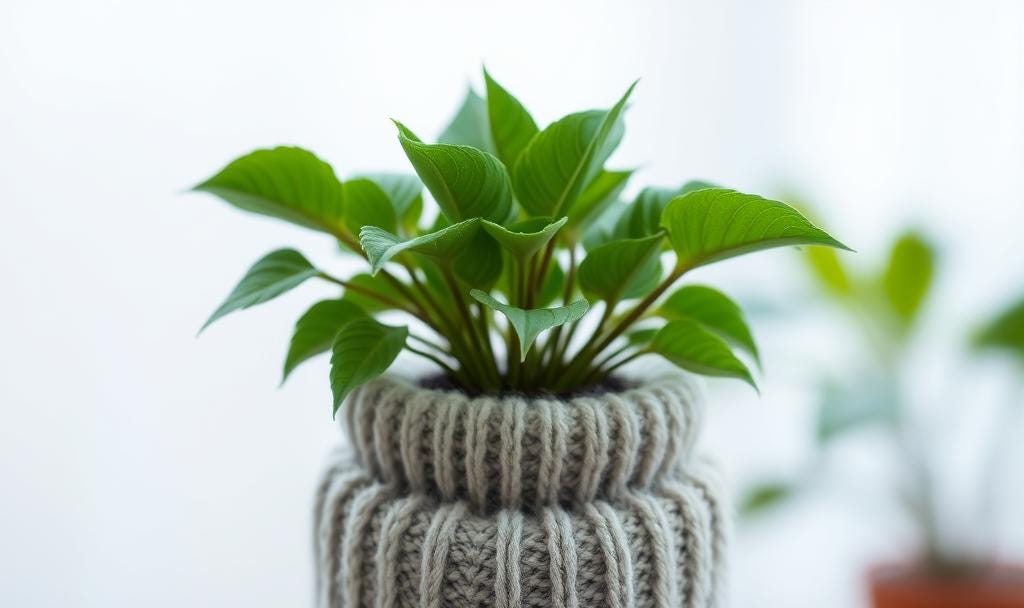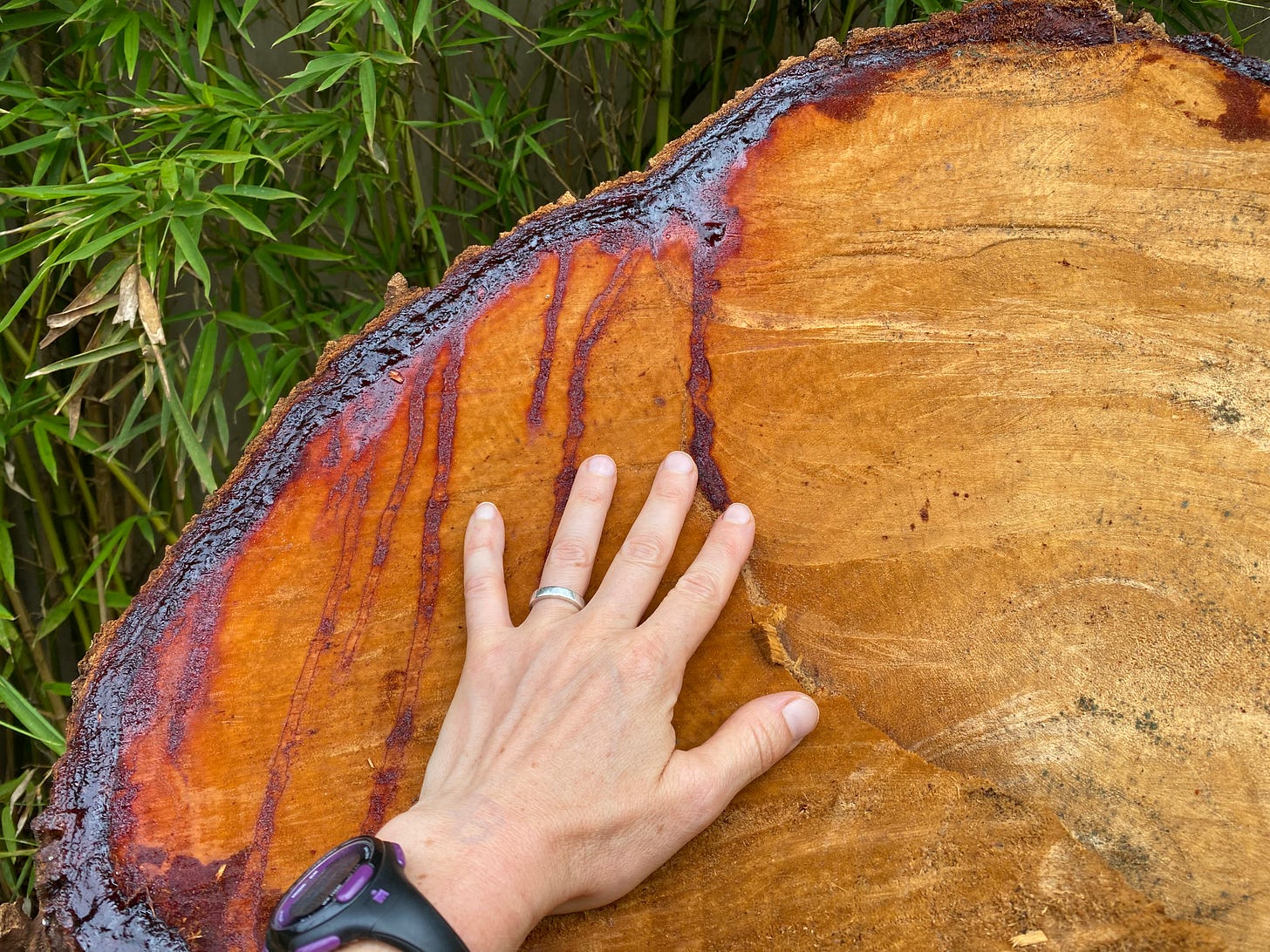Quick note: This one is a bit on the philosophical side for yours truly. I’m just working through some stuff and this is where I do that sometimes. Thanks for joining!
Listen here:
While on a recent walk in Karura Forest, I made some out-loud, proud-mama observation about our daughters to my husband, Eric. I don’t even remember what it was. Something like, “Look at how much they love each other!” as they tumbled into one another, gravity-tromping down the trail. Or maybe “I love how independent they are!”
In his unmatchable, quiet, understated way, which I wish I could effectively render on the page, Eric, with the intonation one might use to say, “The sky is blue” or “It’s time to go to school,” deadpanned,
“I think you should stop anthropomorphizing our children.”
I burst out laughing.
Even though I didn’t stop walking to look at him, I could feel his mischievous grin behind me. It started in crinkles around his eyes and migrated toward his beard.
Textbook Eric. Insightful, incisive commentary-in-comedy with uninflected, unemotive, timely delivery.
“I mean, they’re wild animals!” he continued, now giggling in the way I love the most.
But he didn’t have to add this bit for me. I was already following-ahead of him, linking his comment with all kinds of thoughts and words-and-more-words, as I do.
As I watched Clara and Nora’s little animal bodies traipsing down the trail, Nora alongside our docile dog, Arty, tripping herself and him with the slack leash, Clara leading the way, all of us tumbling toward Lily Lake where we visited the mermaid castle Clara and her classmates at her Forest School had made just three days earlier, I pondered anthropomorphism.
Anthropomorphization was in full effect on another recent and relatively chilly day in Nairobi (Note: the ambient temperature in Nairobi is almost always extremely comfortable. Living here after a childhood in Wisconsin and a decade-and-a-half in Colorado in the highest elevation city in the U.S. boasting seven plus months of winter, I have quickly, readily, even eagerly acclimated to this climate, finding comfort in an approximately 6-degree temperature band from 70-76 degrees F. Beyond that in either direction is freezing or boiling).
Softened as I am, when the mercury dipped to just 67 degrees F, I had to put on warm layers. On the way to school, I mimicked Sneezy the Snowman, fake shivering and saying “Brrr rrrrr…it’s so cold!”
From her carseat, Nora asked, “Do you think the plants feel cold?”
Like the practiced teacher-mom I am, I asked, “What do you think?”
She paused for a moment. “I think so.”
Then, in full plant-anthropomorphization sequitur, she shared, “I saw two trees hugging in the forest the other day. I hugged them, too.”
I pictured my little forest sprite joining a conifer cuddle (more likely some sort of hardwood, but I couldn’t figure out alliteration there). My heart melted.
“Do you think the plants talk?” Clara chimed in.
“Maybe they’re saying, ‘Brrrr. It’s soooooo cold!’” I mimicked the plants chatting, their bodies quaking like aspen leaves.
“I think they talk to each other,” Clara said, unequivocally.
“I do, too.” I said quietly (a rarity for me).
Nora dropped into some silly antics narrating a multi-player plant dialogue in her fake raspy baby-voice that sounds like she has a lisp. “Woo woo, it’s sssooo coooooold.” “I need a jumpa!” (jumper is a sweater/jacket in British English and “a” is the Kenyan pronunciation for all words that end in “er”, my fave being “fla” for flour, as in “corn fla” or “wheat fla”).
While she riffed, I went to a more serious place.
I was – at that very moment – in the middle of reading The Light Eater’s (recommend!) chapter about plant communication. Throughout the book, writer Zoë Schlanger relates stories of scientists who’ve basically been tarred and feathered for the categorically unscientific (but is it actually?) act of comparing plants to people in sensorial and – gasp – behavioral ways.
Meanwhile, over here, considering myself down-to-Earth (and, come to think of it, maybe that’s the explanation), I have been hearing trees talking to me for over a year. And the talking isn’t casual chit chat conversation, it’s more of an energetic wisdom-dropping. When I walk into a forest, it’s not at all like being in some bustling din-filled coffee shop full of caffeinated conversations and small talk. I can’t even hear the trees talking to each other (though I absolutely believe they do). I hear them talking to me.
It started with one tree in my neighborhood. I visit her often – when I’m feeling good or when I’m dysregulated or sad. Especially when I feel disoriented. She’s just a stump, actually. Like in the last pages of The Giving Tree. I press my hand against her, square breathing to slow my mind and heart rate, which is partially counteracted by furtive glances over my shoulder wondering who will catch me and think I’m the neighborhood crazy lady. To make matters weirder, she only started speaking to me from the afterlife (let’s save that topic for another time).
I actually love comparing plants and animals to people. Because I love people and plants and animals and I believe anthropomorphism can bring us closer to other beings by unearthing a sense of kinship. It compels us to conjure tree people and plant sisters that Robin Wall Kimmerer so beautifully describes in Braiding Sweetgrass.
But Eric’s counterintuitive comment made me wonder if plants and animals want to be anthropomorphized. How much baggage barnacles onto the human characteristics we assign to non-humans? Do trees and plants really want to be compared with us in metaphor, with no moderating ‘like’ or ‘as’?
What about zoomorphism (ascribing animal characteristics to humans) or phytomorphism (ascribing plant characteristics to humans)?
There are some qualities of animals or plants I would love to possess. Blooming. Patience (trees seem more patient to me at least). Wisdom. An orientation toward regeneration, toward “creat(ing) the conditions conducive for all life to thrive” (as my friend Luis Camargo so beautifully articulates), toward honoring – embodying – cycles and seasons and rhythm, towards collective interconnectedness and wholeness.
I know, I know. I’m sure for every thing I’m idealizing about animals and plants right now, there are a million exceptions and horrifying characteristics you could point to. Matriphagy, for one. That’s where offspring consume their own mother (though maybe that happens a little bit to human moms, too?).
I’m not suggesting we should go all lionessy and tear apart the flesh of an antelope mid-stride (that is a level of circle-of-life-ness I do not wish to replicate or reclaim for LOTS of reasons). To be very clear: I love being human and I love, love people.
And, at ages five and seven, I think my daughters are closer to an “animalistic” state in some really beautiful ways.
In the accretion of years and layers and living, as we armor up (thanks Brené) or become desensitized or numb amidst all.the.things, I worry that some of our most beautiful animalistic or maybe botanolistic (inventing words here, just go with it) instincts get buried. Especially empathy – our ability to feel with others. And when I say others or other, I mean a wildly inclusive other that extends to ALL others (human, animal, plant, mineral).
I wonder if those tree people who Nora saw in the woods wanted privacy. If theirs was an intimate embrace. But I have to believe they would be ok with Nora catching them – and especially joining them – wrapping her little arms around them as far as she could stretch. Because for now she’s both and between; she’s one of them even as she’s one of us.
❤️B






This is SOooo beautiful Becca (btw I miss you).
The last sentence about being “both and”, struck me as a whisper of the big T (truth). Thou art that.
Yep, a beautiful analogy (Our girls)